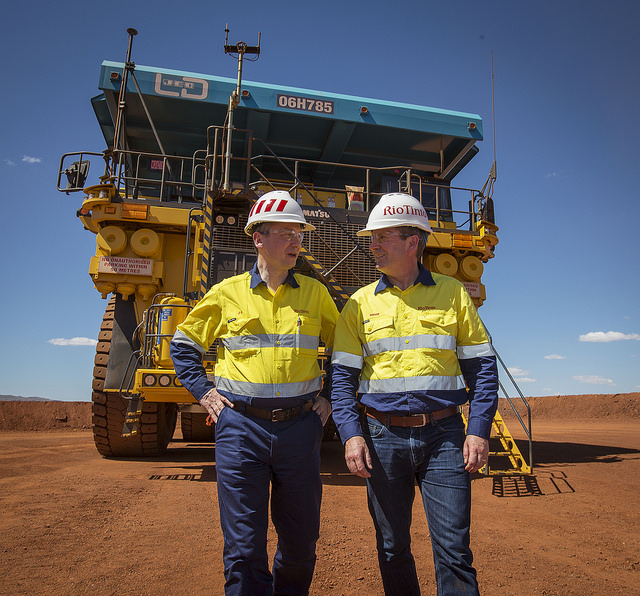In a presentation to investors and analysts today in Perth, Rio Tinto showcases its Pilbara operations, a worldclass, leading-edge, fully integrated system. The presenters discuss how Rio Tinto’s iron ore business will continue to deliver superior value by developing greater flexibility across its system of mines, rail and ports in Western Australia, capable of dynamically responding to changes in market and customer demand.
Rio Tinto Iron Ore Chief Executive Chris Salisbury said “Our strategy is to optimise our Pilbara assets to deliver value for our shareholders. Our iron ore business delivered A$7.3 billion of free cash flow in 2017 and we will continue to maximise free cash flow by pursuing a value-over-volume approach, built on a portfolio of world-class assets that deliver our premium iron ore product, the Pilbara Blend.
“We are driving productivity improvements right across the business and we continue to leverage considerable value from innovation and new technology. Our pioneering autonomous rail project, AutoHaul®, is on schedule to be implemented by the end of the year, and is already delivering benefits to the business through an uplift in rail capacity.
“Removing our bottleneck in rail and increasing flexibility remain a key priority. This work is progressing well and rail and mine capacity should be in line with nameplate port capacity by the end of 2019. As we have said before, we will continue to optimise the system to provide the flexibility to respond to market conditions. However, importantly, capacity is not the same as tonnes shipped. How we use the capacity of our integrated system will be dynamic, in line with a strict value-over-volume approach.
“We have an extensive pipeline of future development options, which we continue to grow. In 2018, our 700 km drilling program will provide both ongoing reserve replenishment and significant optionality to optimise operations.”
More than 4,500 mine-to-market productivity initiatives are being pursued in iron ore, delivering A$500 million in additional free cash flow per year by 2021 as part of an annual Group-wide target of A$1.5 billion. The company’s productivity and cash focus are increasingly important to offset early signs of cost inflation which are returning to the industry.
The Group’s sector-leading application of new technology is also discussed, including the continued successful roll out of automation, with 95 autonomous trucks and 11 autonomous drills already in operation. Work is progressing on the feasibility study for the Koodaideri project, designed to be the first mine to take full advantage of all these innovations.
Salisbury added the company continues to benefit from changes in the Chinese steel industry.
“The steel industry in China has undergone a significant shift in recent times due to supply-side reforms and environmental policy improvements. We believe these reforms are structural and that our business is well positioned to take advantage of these changes due to robust demand for our high quality products, including the Pilbara Blend.
Other key points from the presentations include:
- A large drilling program for 2018 is scheduled, with 700 km of drilling scheduled at various operational hubs near existing mines in addition to exploration on new leases
- The Koodaideri feasibility study continues to progress. The project underpins the Pilbara Blend product and should be a low-cost operation with significant capacity optionality
- Expected spending of ~A$2.2 billion on replacement mines over the next three years including initial spending on the Koodaideri, West Angelas and Robe Valley developments
- The A$118 million Billiard South sustaining project is in development, helping to support Yandicoogina operations. Production is expected to commence in 2019
- The Silvergrass mine continues to ramp up to its 21 Mt/y capacity, running at an annualised rate of 15.3 Mt/y at end of the first quarter of 2018
- Sustaining capital spending of ~A$1 billion per year for the next three years in the Pilbara
- The pioneering AutoHaul® project is building future system flexibility. Following regulatory approval received in May, full implementation of the autonomous programme is anticipated by the end of 2018
- Rail and mine capacity is expected to match nameplate port capacity by the end of 2019
- The rail productivity program, targeting every part of the rail system, will deliver additional capacity and flexibility to underpin our optimised supply chain design.
And in sales and marketing:
- China’s steel industry is undergoing a structural change, removal of less efficient steel-making capacity and strong demand is supporting steel pricing and currently provides a robust backdrop for high quality iron ore
- Shipment guidance for 2018 remains unchanged at between 330 Mt and 340 Mt.











